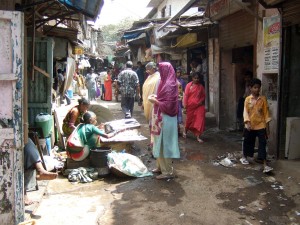
The Dharavi Slum in Mumbai bustles with life despite the poverty. Some slums in India are home to one million people per square mile. (Image by Kounosu.)
For most of the past decade, New Urbanists have been touting the slum or squatter city (especially the massive ones in India) as the key to understanding the future of urban dwelling. Whole Earth Catalogue founder Stewart Brand makes a cogent argument for this type of thinking in “How Slums Can Save the Planet,” a new article in Prospect. It’s well worth reading, especially since Brand has been spookily prescient in the past.
A billion people currently reside in squatter cities and by all estimates, that number is likely to grow at a rapid pace in the coming decades. And that’s good news for the planet, since cities are far more green than rural areas, thanks to their population density. While there is danger in well-fed Westerners being too sanguine about the lives of slum denizens–the poverty there still is crushing despite the ingenuity of the people–there’s much for all urbanites to learn from these bustling quarters. An excerpt:
“One idea that could be transferred from squatter cities is urban farming. An article by Gretchen Vogel in Science in 2008 enthused: ‘In a high-tech answer to the ‘local food’ movement, some experts want to transport the whole farm shoots, roots, and all to the city. They predict that future cities could grow most of their food inside city limits, in ultraefficient greenhousess. A farm on one city block could feed 50,000 people with vegetables, fruit, eggs, and meat. Upper floors would grow hydroponic crops; lower floors would house chickens and fish that consume plant waste.’”
Tags: Gretchen Vogel, Stewart Brand
